Rosso Fiorentino Elba II Loudspeakers by Greg Simmons
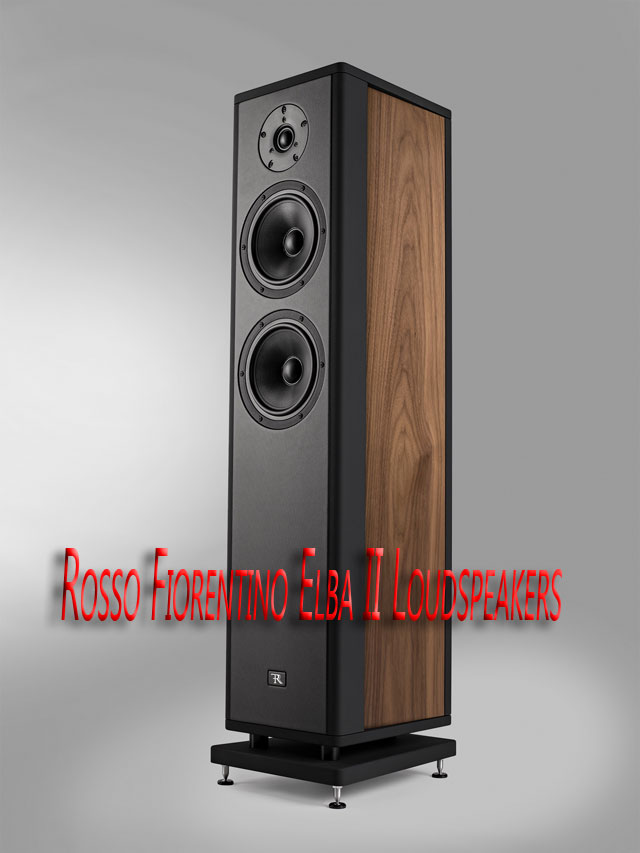
The Grand Tour of Italy
 This was a happy accident, but the past year or so has been spent listening to, reviewing, and most importantly, enjoying high-fidelity components from Italy. It all began with the lovely Gold Note Mediterraneo turntable, followed by the very compelling Norma HS IPA-1 integrated amplifier, then a pair of excellent phono cartridges from Gold Note. It’s proved to have been one of the more musically satisfying groups of equipment I’ve had the pleasure of listening to. As we begin to recede from the Summer solstice, I’m still at it with the Rosso Fiorentino Elba II loudspeakers.
This was a happy accident, but the past year or so has been spent listening to, reviewing, and most importantly, enjoying high-fidelity components from Italy. It all began with the lovely Gold Note Mediterraneo turntable, followed by the very compelling Norma HS IPA-1 integrated amplifier, then a pair of excellent phono cartridges from Gold Note. It’s proved to have been one of the more musically satisfying groups of equipment I’ve had the pleasure of listening to. As we begin to recede from the Summer solstice, I’m still at it with the Rosso Fiorentino Elba II loudspeakers.
Audio writers used to speak in sweeping generalizations about equipment from different countries – British hi-fi being polite, German clinical, French fast and lean, etc. – but those lines, if they ever really existed at all, have largely blurred into irrelevance. But I will say this about the Italian equipment I’ve reviewed this year: In addition to sounding great, all of the pieces had far better than average attention to aesthetic design. The Mediterraneo turntable, with its undulating solid walnut plinth was surely among the most attractive piece of equipment I’ve ever reviewed. If this enhanced design sensibility is indeed an Italian thing, it’s a thing I applaud. Lots of audio gear looks impressive, but there’s absolutely no reason that gear can’t also be beautiful in addition to having prerequisite great sound. Better still, all of these components have generally been voiced towards musical pleasure rather than the pursuit of some impossibly analytical standard of source fidelity. All of them made memorable music.
As an added benefit, during this grand tour I was inspired to reacquaint myself with other Italian pleasures I hadn’t enjoyed for a while: the big, rustic, tannic reds of Montepulciano have renewed themselves as a household favorite, and I’m re-reading my favorite book, I Claudius, which – though written by an Englishman – takes place almost entirely in Rome, albeit two-thousand years ago. I’ve also found myself listening to the music of Luigi Boccherini a great deal lately, which I’ll come back to in a little bit.
Rosso Fiorentino
 Now comes Italian speaker manufacturer Rosso Fiorentino – Red Flower, though it sounds far more elegant in Italian – which takes its name and inspiration from the nickname of the ginger-haired renaissance painter Giovanni Battista di Jacopo (1495-1540).
Now comes Italian speaker manufacturer Rosso Fiorentino – Red Flower, though it sounds far more elegant in Italian – which takes its name and inspiration from the nickname of the ginger-haired renaissance painter Giovanni Battista di Jacopo (1495-1540).
The company, founded by Francesco Rubenni, is located in the Tuscany region and builds four lines of speakers ranging from the Classic Series, under review here, up to the Flagship Series. All of their speakers are designed by Rubenni with his design and engineering team, and are manufactured in Italy. Similar to some of the other Italian manufacturers I’ve reviewed this year, Rubenni stresses an emotional connection with the music and, “the instinctive pursuit of elegance.” Measured numeric superiority is important, but give me a component that’s voiced by ear any day.
Their speakers also emphasize the importance of great aesthetic design, and while the subject of this review – the entry point to the Rosso Fiorentino line – is a basic rectangular tower, it is nevertheless a very handsome speaker. From there, the rest of their offerings become significantly more dramatic, with stacked inverted trapezoids, pyramids, and other visually arresting architecture. All of their designs bear a high level of refinement as well as drama. No one is going to walk into a room and not notice a Rosso Fiorentino loudspeaker.
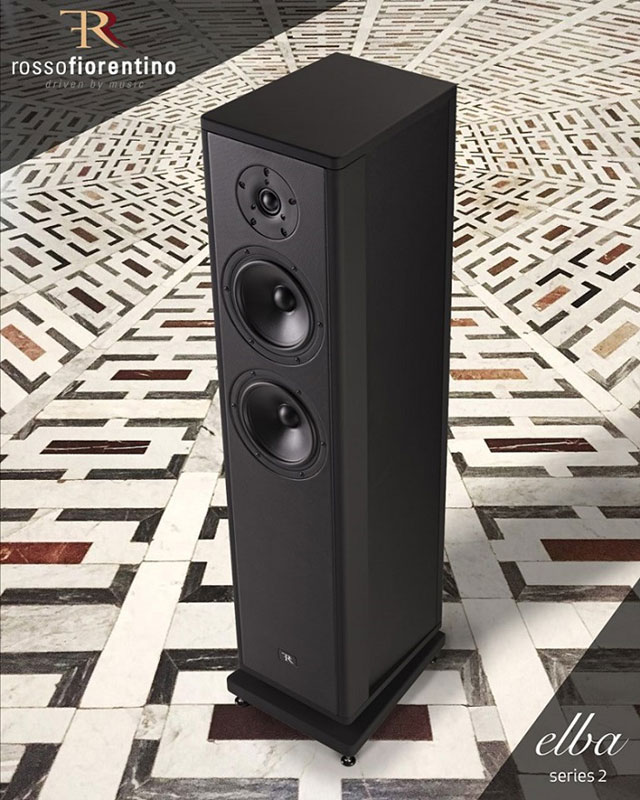
The Elba, Series II Loudspeaker
 The Elba, Series II is a moderately large, three-driver, 2 ½ way floor-standing speaker. It’s faced with carbon fiber patterned leather and the top, base plinth and corners are covered in an appealing matte rubberized material dressed up with real walnut veneer side panels. At forty-three inches they’re a couple inches taller than my Verity Fidelio Encores, and possibly because of the black façade, they look a little more imposing as well (though they’re not nearly as heavy). The speaker cabinet sits about an inch over a plinth supported by three pillars. With the gap between the speaker cabinet and plinth I expected to find a downward-firing port, but no, the two ports are located directly behind each of the mid/woofers cones. The entire contraption stands on supplied carpet spikes with pucks included preventing damage to hardwood and other delicate floor surfaces. The spikes are long enough to ensure that there is about a half-inch gap between the bottom of the plinth and the carpet underneath, effectively linking the speakers to the solid floor below. As I mentioned, the review pair had the optional walnut side panels, which softened the overall visual effect, but I could imagine that an all-black pair might seem a bit austere. The speakers look like very high-quality pieces, with excellent fit and finish.
The Elba, Series II is a moderately large, three-driver, 2 ½ way floor-standing speaker. It’s faced with carbon fiber patterned leather and the top, base plinth and corners are covered in an appealing matte rubberized material dressed up with real walnut veneer side panels. At forty-three inches they’re a couple inches taller than my Verity Fidelio Encores, and possibly because of the black façade, they look a little more imposing as well (though they’re not nearly as heavy). The speaker cabinet sits about an inch over a plinth supported by three pillars. With the gap between the speaker cabinet and plinth I expected to find a downward-firing port, but no, the two ports are located directly behind each of the mid/woofers cones. The entire contraption stands on supplied carpet spikes with pucks included preventing damage to hardwood and other delicate floor surfaces. The spikes are long enough to ensure that there is about a half-inch gap between the bottom of the plinth and the carpet underneath, effectively linking the speakers to the solid floor below. As I mentioned, the review pair had the optional walnut side panels, which softened the overall visual effect, but I could imagine that an all-black pair might seem a bit austere. The speakers look like very high-quality pieces, with excellent fit and finish.
The mechanical parts of the Elbas include a 26mm double-magnet silk dome tweeter that is claimed to extend all the way to 40kHz, high enough to have the canine chorus singing along (the canine chorus is naturally called…wait for it…The Woofers… get it? No? Try the veal, I’m here all week.), as well as two coated fiberglass mid/bass drivers with the aforementioned rear-firing ports. The ports themselves are aluminum tubes that transition into the rubberized surface material. Attention to detail is evident: the seams between the two materials are all but invisible unless you stick a light inside the port, which naturally I did. The joint tolerances are very tight.
Sensitivity is rated at 88 dB with a nominal impedance of 6ohms and a minimum of 4 Ohms. In their product literature, RF points out that the Elba’s crossover was specifically designed to create a very narrow impedance band to make the speakers as consistent a drive load as possible, which among other things makes them friendlier towards tube amps (My Verity Fidelio Encores share this general approach at 8Ω nominal and 6Ω minimum). I primarily used my Cary V12r power amp set up in triode mode at about 60 watts per channel and never felt I was under-powering the speakers. The other amplifier I drove them with for a few days was the Norma HS IPA-1 integrated – also Italian – which I had in for review a few months ago. The Norma’s seventy-five watts were also more than sufficient to drive these speakers. 88dB’s on paper is not a terribly efficient speaker, but with no amplifier-punishing, nose-diving impedance dips they proved to be easy to drive with moderate power: Very smart.
One other little notable detail is that Rosso Fiorentino has designed its own binding posts, which appear to be primarily of aluminum, with finger-shaped indentations to facilitate getting a good grip. I found them quite effective and comfortable for tightening down spade lugs, a nice little detail.
Setting up
 In my room, the Elba’s proved to be fairly easy to set up, or maybe I just got lucky. Ordinarily, my own speakers are set up in a slightly modified Cardas Golden Rule setup – essentially a room divided into thirds with the speakers on one dividing line and the chair on the other facing each other in an equilateral triangle. My own speakers also get toed in a bit. I began with the Elba’s exactly where I park my verities and went from there. I moved them around for a few days – forward, backward, closer together, then further apart – until they were really dialed in. They ended up about eighteen inches further apart, and about a foot closer to the wall behind them than my usual setup, but with my chair also pulled towards them by a foot or so. It seemed they benefitted from a little more reinforcement from the rear and side-walls, but not from greater distance to the listening position, at least in my room (YRMV). Toe-in was also beneficial at about the same angle I use with my own speakers, with the inside side-walls clearly visible. It was not a radical departure from how setup my own speakers in this room.
In my room, the Elba’s proved to be fairly easy to set up, or maybe I just got lucky. Ordinarily, my own speakers are set up in a slightly modified Cardas Golden Rule setup – essentially a room divided into thirds with the speakers on one dividing line and the chair on the other facing each other in an equilateral triangle. My own speakers also get toed in a bit. I began with the Elba’s exactly where I park my verities and went from there. I moved them around for a few days – forward, backward, closer together, then further apart – until they were really dialed in. They ended up about eighteen inches further apart, and about a foot closer to the wall behind them than my usual setup, but with my chair also pulled towards them by a foot or so. It seemed they benefitted from a little more reinforcement from the rear and side-walls, but not from greater distance to the listening position, at least in my room (YRMV). Toe-in was also beneficial at about the same angle I use with my own speakers, with the inside side-walls clearly visible. It was not a radical departure from how setup my own speakers in this room.
The other thing these speakers really benefitted from was their carpet spikes. This pair had been to another reviewer’s house and neither the spikes nor the grills were forwarded with the speakers. It took a while for the spikes to show up and I’m glad I waited to write this article until they did. Bass and overall imaging tightened up noticeably so it was well worth having them. I still have no idea what the grills look like.
Listening
I enjoy the music of Luigi Boccherini (1743-1805) for the same reason I love Haydn: he was a consummate melodist, consistently writing music that was both interesting and unfailingly beautiful. A virtuoso cellist, he introduced some unusual instrumentation: string quintets featuring two cellos and – having spent much of his professional life in Spain – compositions prominently featuring the guitar. I don’t claim to be an expert on Boccherini’s life or music – my experience is limited to ten or so records and a Wikipedia entry – but I know what I like.
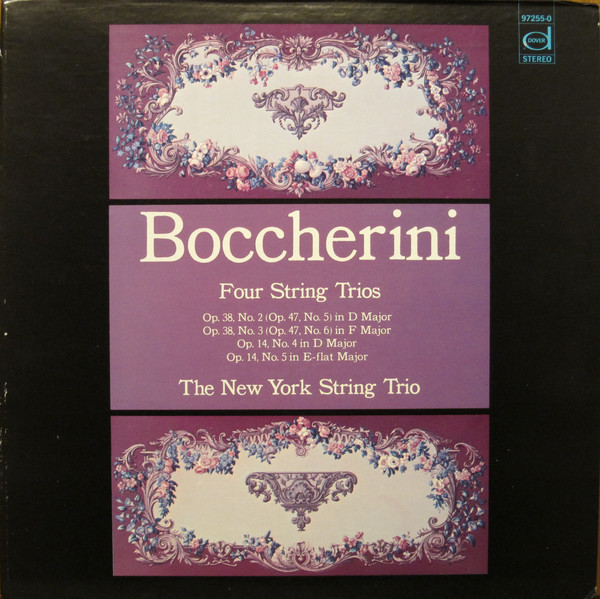 Case in point: Four String Trios, performed by the New York String Trio (Dover 97255-0 1966). As already noted, Boccherini’s melodies are lovely, but music is more than just the notes as played, it’s the effect of the instrumental interactions in their entirety, the blended harmonies, and in particular on this record, the textures. Those textures play straight into some the Elba’s greatest strengths. The fullest measure of this recording involves the reproduction of string vibrato across the frequency spectrum – the passages where all three instruments are simultaneously holding long notes. You can hear the three instruments on any speaker. The Elbas allowed me to feel them as well. The air vibrated with the draw of the rosined bows over the strings. You might expect that level of air movement out of a bass-heavy recording with pumping woofers, but a string trio is not an especially bass-heavy thing. This effect was simply the Elbas excelling at reproducing the natural vibrato that you would experience in the room with the musicians. In this particular element my own speakers suffered in comparison.
Case in point: Four String Trios, performed by the New York String Trio (Dover 97255-0 1966). As already noted, Boccherini’s melodies are lovely, but music is more than just the notes as played, it’s the effect of the instrumental interactions in their entirety, the blended harmonies, and in particular on this record, the textures. Those textures play straight into some the Elba’s greatest strengths. The fullest measure of this recording involves the reproduction of string vibrato across the frequency spectrum – the passages where all three instruments are simultaneously holding long notes. You can hear the three instruments on any speaker. The Elbas allowed me to feel them as well. The air vibrated with the draw of the rosined bows over the strings. You might expect that level of air movement out of a bass-heavy recording with pumping woofers, but a string trio is not an especially bass-heavy thing. This effect was simply the Elbas excelling at reproducing the natural vibrato that you would experience in the room with the musicians. In this particular element my own speakers suffered in comparison.
Another strength of the Elbas is musicians in their performance space. On the same record, in the Opus 14, Number 4 in D major, second movement – the Andantino – most of the viola and cello parts are played pizzicato while the violin carries the primary melody. Personally, I find the pizzicato lines to be every bit as engaging as the violin. Not simply a couple plucked notes in the background, they’re a complex component of the music, with melodies and harmonies of their own. And here again the performance plays into another of the Elba’s strengths: imaging. The viola and the cello are in the center and right side of the stage respectively, with the violin on the left. The pizzicato notes don’t produce the volume of the violin, but they’re clear nonetheless, well defined in their space, recessed a little, tight and physically palpable. In that same vein, the Elbas were also especially good at not crowding music around the speakers. In my system, nothing sounded like it was coming from a box except on the most unnaturally hard-panned recordings.
Perhaps most importantly, I found the Elbas to be musically satisfying in a “just shut up and enjoy it” kind of way. In some respects, it was difficult to review these speakers because all of the things that hi-fi reviewers dwell on, a hyper-detailed presentation, musicians etched in space, and the like, disappeared into the musical performance in its entirety.
But Can They Rock?
Leaving Italy, and forgetting about the speakers for a minute, the bigger question really ought to be, ‘Can I still rock?’ Now that I’m in my fifties – some occasional Motörhead notwithstanding – the answer is no, not really, but Dire Straits still can.
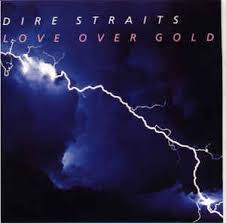 Until a few months ago I hadn’t listened to the song “Industrial Disease” since high school in the late eighties when it was a mixed-tape staple as we bounced around in a buddy’s ancient F-150. No cassette deck in this truck, no siree. A boom box rested in the middle of the front red vinyl bench seat pumping out a steady jam of harder-edged rock & roll, all the while blowing through D-Cell batteries at an alarming rate. In that context “Industrial Disease” was just a great song, but we seldom listened to the rest of the album because it just didn’t rock hard enough. Love Over Gold (Warner Brothers, W4-23728, 1982, Mobile Fidelity reissue 2020) is not kiddie pop. The songs are longer, with the opening “Telegraph Road” clocking in at over fourteen minutes. Instrumentals are complex with additional percussion and even a vibraphone making an appearance. Mark Knopfler’s lyrics – which in some places are almost Leonard Cohen-esque – demand attention in a way no Van Halen record ever did. There are few catchy hooks or anthem choruses. This is music that requires an attention span longer than that of an average fourteen-year-old kid.
Until a few months ago I hadn’t listened to the song “Industrial Disease” since high school in the late eighties when it was a mixed-tape staple as we bounced around in a buddy’s ancient F-150. No cassette deck in this truck, no siree. A boom box rested in the middle of the front red vinyl bench seat pumping out a steady jam of harder-edged rock & roll, all the while blowing through D-Cell batteries at an alarming rate. In that context “Industrial Disease” was just a great song, but we seldom listened to the rest of the album because it just didn’t rock hard enough. Love Over Gold (Warner Brothers, W4-23728, 1982, Mobile Fidelity reissue 2020) is not kiddie pop. The songs are longer, with the opening “Telegraph Road” clocking in at over fourteen minutes. Instrumentals are complex with additional percussion and even a vibraphone making an appearance. Mark Knopfler’s lyrics – which in some places are almost Leonard Cohen-esque – demand attention in a way no Van Halen record ever did. There are few catchy hooks or anthem choruses. This is music that requires an attention span longer than that of an average fourteen-year-old kid.
Having only listened to “Industrial Disease” on that boom box, I had no idea the album from whence it came was such a great recording. Earlier this year Mobile Fidelity reissued Love Over Gold on two 45 rpm LPs and it is a sonic jewel: instrumental clarity, stage dimension, slam… all the things you could want in a first-class pressing. Best of all, the music holds up really well thirty-eight years after it was first recorded.
“Private Investigations” was the hit single from this record, but “Industrial Disease” is the rocker. From the opening guitar chords, organ intro and driving hi-hat, the production is as clean as you’ll likely find on a rock & roll record. Bass has excellent definition and authority, if not the deepest extension, and the kick drum punches hard. The really low foot pedal organ notes at the end of the song have decent heft and resonance from a speaker that’s only flat to 40Hz, and to credit of the Elbas it emanates from a specific place, slightly to the left of center between the speakers, a notable feature of good record engineering when so much music of the era treated deep bass as a wall of sound proposition. Knopfler’s vocals are present, if not quite in the way you’d find on a great jazz recording, but that’s the recording, not the speakers.
Even with just the sixty watts driving them, the Elbas delivered the music to my years with power, throwing a large, tall soundstage. Aside from the 45 rpm curse of having to hop up to change the record every few minutes, this was a great, engaging, fun listening experience; far more than just a nostalgia trip through my high school years.
What Don’t They Do?
All speakers – well, all equipment, really – involves trade-offs. When I was first discussing a review of the Elbas, U.S. distributor Derek “Skip” Skipworth of Audio Thesis told me something interesting: He tries to never do a first demonstration of the Elbas with music the potential customer is familiar with, preferring to let people acclimate to the speaker’s sound before turning them loose with their personal favorites. Having hear this, when I installed the Elbas in my system I naturally reached for records that I was intimately familiar with to find out why Skip would say such a thing, and I think I understand his point of view.
Different speakers will emphasize different elements of the sonic landscape. I once reviewed a stand mount with a RAAL tweeter that made the treble extension the defining characteristic of the speakers. Everything else was just along for the ride. My own Verities are very neutral top to bottom making them a great tool for reviewing other equipment. They’re very detailed but also somewhat unforgiving of bad recordings, mismatched ancillaries, and the like. They’re what sometimes get referred to as ‘truth-tellers’, whether you like that truth or not. At their best they sound great, but when something is off, look out!
By contrast, the Rosso Fiorentino Elba speakers are defined by the textures and musicality I spent so much time talking about earlier, and that makes for truly wonderful reproduction of great recordings. The tradeoff is in that last bit of liquidity, and on first listen that difference is audible and a little disconcerting. But then that whole-cloth presentation takes over and the question of ultimate resolution quickly recedes into the background as the Elba’s overwhelming musical competence takes over. It didn’t take more than a few records to get past this mild shock to discover the Elba’s other great qualities, but I can see why Skip prefers to create a little process when introducing folks to these speakers.
By contrast, at their best my Verities are capable of grain-free detail that the Elbas can’t quite match. I’m not sure that makes the Verities a better speaker though: they have a bit more dynamic punch and more accurate, crystalline clarity perhaps, but they’re not necessarily more enjoyable to listen to. The Verities also require more careful setup of ancillary gear. I have to be incredibly careful with cartridge alignment and tonearm damping for example, lest the treble become brittle and strident. As a reviewer of hi-fi equipment, I need the Verities to understand what everything else in my system is doing, but I was sorely tempted to keep the Elbas because they just played great music.
Conclusion
Purchasing a new piece of audio gear is always a very personal process, especially loudspeakers which – whatever the rest of the equipment is doing – still have to create the ultimate sound that the listener will enjoy hearing. In that respect, the Rosso Fiorentino Elba II loudspeakers were exceptionally good and I would definitely recommend an audition for anyone looking for a pair of speakers in this price range. They don’t need a ton of amplification power to sound great and they were easy to integrate with the rest of my components. They certainly have their own point of view, but in the end, they’re one of the most musically satisfying speakers I’ve had in my listening room. Their ability to unearth the beauty in great music was exemplary: dynamic, exciting, and satisfying. During the time I spent with the Elba IIs, I spent more time simply enjoying the music, which – as always – is about the highest compliment I can offer to any component.
I’ve certainly enjoyed this year’s selection of components from Italy, and the Rosso Fiorentino Elba II’s were a genuine highlight within that group. Now what I really need is the opportunity to review the sound system in a Ferrari for a few months. Anyone…? Hello…? Enzo…?


greg simmons
Specifications
Rosso Fiorentino Elba II Loudspeakers
Price: $5,000 all black; $5,250 with walnut veneer side panels. Additional charges for custom wood or painted side panels.
Type: 2.5 way, rear-ported floor standing speaker
Sensitivity: 88 dB (2.83V, 1M)
Nominal Impedance: 6Ω (minimum 4Ω)
Tweeter: One-inch (26mm) silk dome.
Mid/Woofers: two six and a half inch (165mm) coated fiberglass
Frequency Response: 40Hz to 30kHz (typical in-room response -6dB @ 35Hz)
Crossover: 60Hz – 2.2kHz
Recommended Amplification: 30-150 watts into 8Ω, unclipped)
Cabinet: Solid HDF with multiple interior absorbent materials.
Dimensions: 42.5”H x 9.3”W x 11.4”D
Weight: 60 LBS
Side Panels: Black carbon fiber pattered leather or genuine walnut veneer. Other finishes on request.
Dealer/Distribution Contact: Audio Thesis
Derek ‘Skip’ Skipworth
Phone: 682.444.3121
Associated Equipment:
Analog Front End
SOTA Sapphire turntable
Rek-O-Kut T12h turntable
Technics 1200 Mk 1 turntable
Technics 1200 M3G turntable (Stock Arm)
Jelco 9” SA-750 DB tonearm (SOTA)
AudioQuest PT-6 tonearm (Tech-12 Mk I)
Karmadon 12” viscous damped unipivot tonearm (Rek-O-Kut)
Lyra Delos cartridge
Audio-Technica OC/9-III cartridge
Audio-Technica AT33Sa cartridge
Miyajima Spirit Mono cartridge
Digital Front End
Cambridge CXC CD transport
Cambridge 840C CD player (still lonely and collecting dust)
Amplification
Cary SLP-98P preamp w/ phono stage
Cary CAD 280 SA V12R power amplifier
Aurorasound SP-03H step-up transformer
Lyric Audio PS-10 MC/MM phono stage
Loudspeakers
Verity Audio Fidelity Encore
Cabling
AudioQuest Copperhead Interconnects
AudioQuest William Tell ZERO speaker cables
AudioQuest Water Interconnects
Zentara Reference ICs
Zentara Reference Speaker Cables
Nordost Blue Heaven ICs
Cullen power cables
AudioQuest NRG-Z3 power cables
MIT Z-Cable power cables
Accessories
AudioQuest Niagara 1200 power conditioner
Tice Box power conditioner
Nordost Sort Kones AC vibration dampers
Mapleshade Audio Rack
Stereo Times Masthead
Publisher/Founder
Clement Perry
Editor
Dave Thomas
Senior Editors
Frank Alles, Mike Girardi, Key Kim, Russell Lichter, Terry London, Moreno Mitchell, Paul Szabady, Bill Wells, Mike Wright, Stephen Yan, and Rob Dockery
Current Contributors
David Abramson, Tim Barrall, Dave Allison, Ron Cook, Lewis Dardick, Dan Secula, Don Shaulis, Greg Simmons, Eric Teh, Greg Voth, Richard Willie, Ed Van Winkle, and Rob Dockery
Music Reviewers:
Carlos Sanchez, John Jonczyk, John Sprung and Russell Lichter
Site Management Clement Perry
Ad Designer: Martin Perry



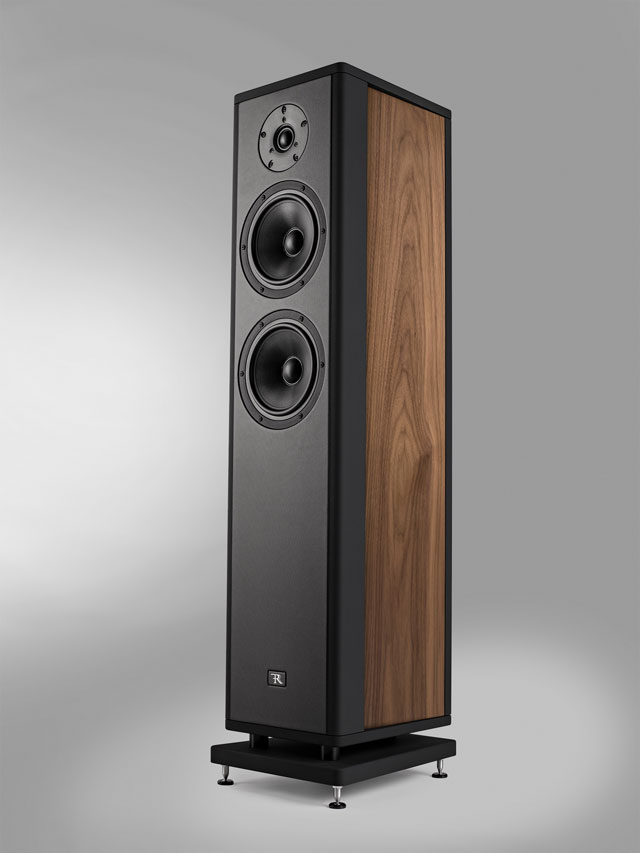
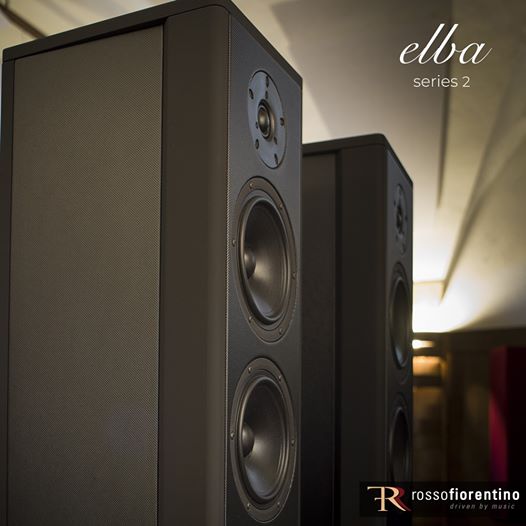



Be the first to comment on: Rosso Fiorentino Elba II Loudspeakers by Greg Simmons